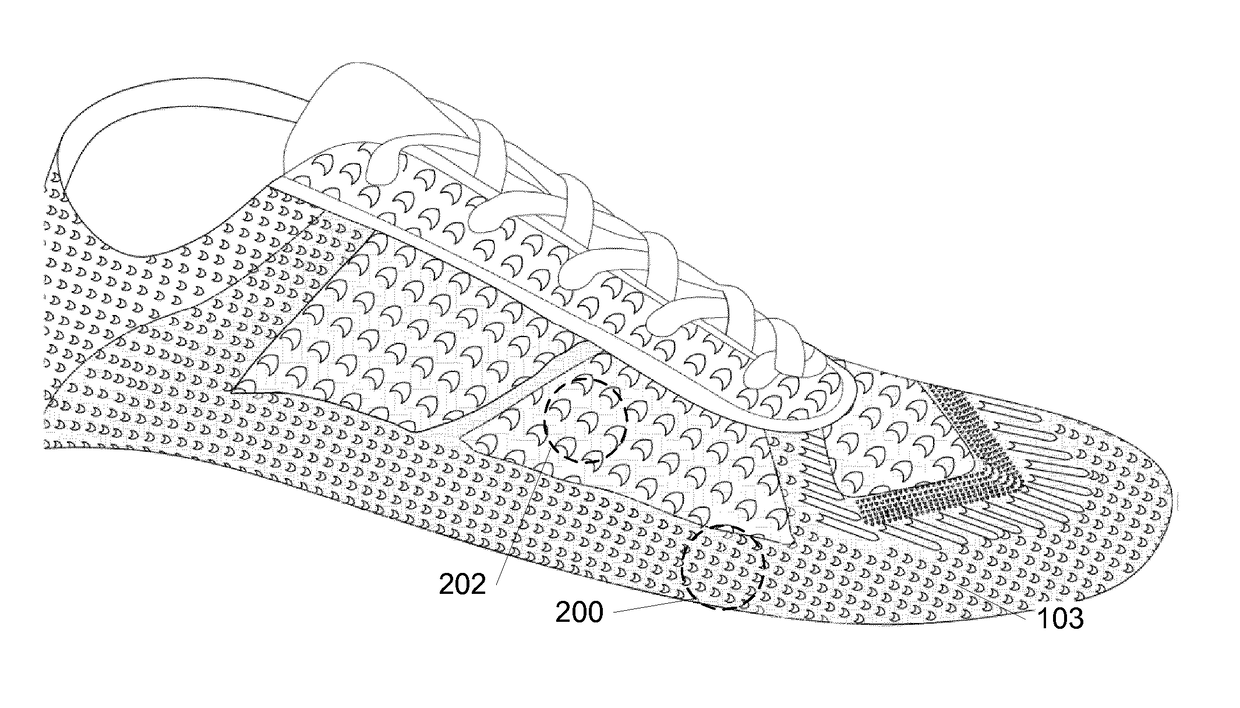A knitted upper for a shoe with a molded sole and a shoe
a technology of molded soles and knitted uppers, which is applied in the field of uppers for shoes with molded soles and shoes, can solve the problems of difficult to obtain the same material strength and shape as can be obtained from other materials, and achieve the effect of high stitch density
- Summary
- Abstract
- Description
- Claims
- Application Information
AI Technical Summary
Benefits of technology
Problems solved by technology
Method used
Image
Examples
Embodiment Construction
[0050]When knitting eg using knitting machines, different knitting technics imply different knitting structures and in these structures stitch densities can vary. A high density indicates a high number of stitches pr. square centimeter (high total number of needle loops in a square area) and a low density indicates a low number of stitches pr. square centimeter (low total number of needle loops in a square area). Knitted parts having a high stitch density have a more closed structure, whereas the low density knitting provides an open structure. Throughout this document reference is made to high and low stitch densities, where the high density has / may have a stitch density above 8 stitches pr. inch and more specifically between 10-12 stitches pr. Inch.
[0051]In FIG. 1, a prior art shoe 101 is illustrated and the different zones are marked and named according to the following:[0052]Upper 102 and sole 104,[0053]Lower edge 103 of upper connected to sole,[0054]Sole line area 105 being the...
PUM
| Property | Measurement | Unit |
|---|---|---|
| melting temperature | aaaaa | aaaaa |
| stitch density | aaaaa | aaaaa |
| molding | aaaaa | aaaaa |
Abstract
Description
Claims
Application Information
 Login to View More
Login to View More - R&D
- Intellectual Property
- Life Sciences
- Materials
- Tech Scout
- Unparalleled Data Quality
- Higher Quality Content
- 60% Fewer Hallucinations
Browse by: Latest US Patents, China's latest patents, Technical Efficacy Thesaurus, Application Domain, Technology Topic, Popular Technical Reports.
© 2025 PatSnap. All rights reserved.Legal|Privacy policy|Modern Slavery Act Transparency Statement|Sitemap|About US| Contact US: help@patsnap.com



